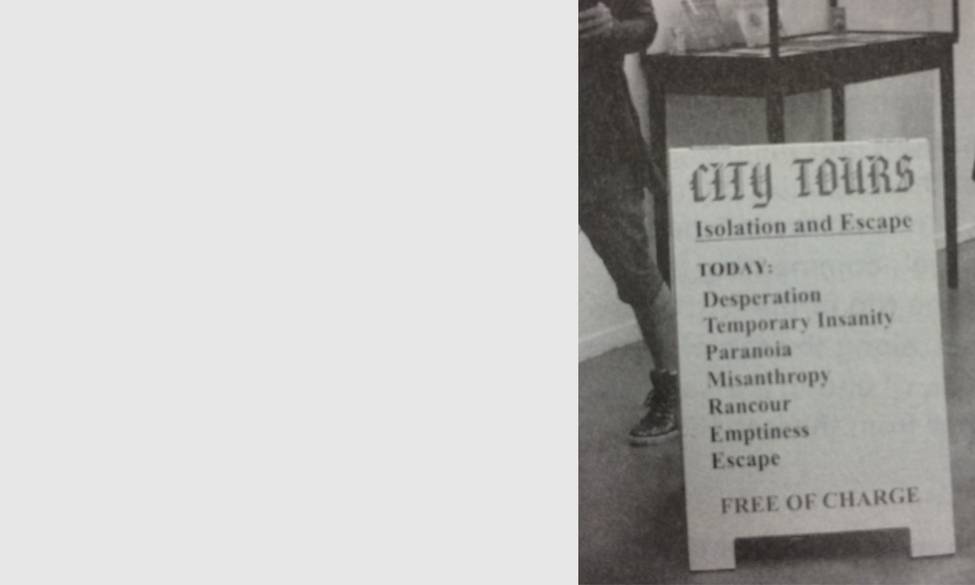City Tours: Mis-direction/Way-losing
This text originally appeared in The National Grid #8

Graphic Design is the communication framework through which messages about what the world is... it's how they reach us. The designer has an enormous responsibility; those are the people putting their wires into our heads.
- Rick Poynor, Helvetica, 2007
1.
Does graphic design even exist anymore? Or did Visual Communication replace it? Design critic Rick Poynor's above evaluation is made as he speaks over images of busy streets, billboards and signage, spliced together with the intention, in this case, to show Helvetica cutting through the visual noise. Here, the designer's role—no wait, responsibility—is to be the clearest possible communicator... to infer meaning, to act as a guide. The role of the designer is to visually map out the city landscape, to design a path, to lead the viewer; design acts as wayfinder.
2.
The term ‘wayfinding’ was first used by the architect Kevin Lynch in his book The Image of the City (1960). In the book, Lynch presents what he terms ‘The Image’—a primary, in-built way-finding device based on memory and individual perception. Stronger than any outside devices such as street numbers or road signs, ‘The Image’ is our cognitive map; what we remember of a place, or an event. The theory supposes that each persons ‘map’ can be vastly different; we all naturally choose references that align with previous experience, we apply our histories to the present.
3.
So, if how we evaluate our surroundings is as much defined by our history as by our present, then as we walk down main street: we pick and choose what to take in, we brush over details, we make assumptions—contrary to Poynor’s suggestion of the designer 'wiring into our heads', Lynch's Image theory somewhat muddies the waters.
4.
Beginning in Dunedin in 2005, and subsequently taking place in Auckland, Hamilton, Christchurch, New Plymouth and as far off as Santiago Chile, sound artist Kaleb Bennett's 'City Tours' ended in association with Enjoy Public Art Gallery, Wellington, in 2009. A free tour, participants were transported in the blacked-out back half of a van, with noise blearing out from customised sound gear. In most cases these were people being toured around their hometown; familiar streets travelled countless times before, but this time, without reference, without a history to draw upon.
5.
On the Enjoy Gallery blog, City Tours is described as:
'A curious, atmospheric, evocative and just plain different collision of subculture, art and performance that shouldn't be missed.'
An important omission here, perhaps, is the role of graphic design. Going back to Poynor's quote at the top... this idea of the designer taking responsibility is tied very closely to an importance placed on legitimacy—the design that accurately represents a product or place. The City Tours sign appropriates the ubiquitous, legitimate sandwich board and perhaps in doing so Bennett appropriates the role of the designer… because Bennett is not a graphic designer, using graphic design in a way that few graphic designers ever would.
6.
Finally, near the bottom of the Enjoy Gallery official press release, in the fine print and next to date & time reads:
'If the van is not there - find the street sign.'
And you might find it, and for a minute you might think you've seen it before, and then you'll quickly realise you haven't.